Open die forging auto spare parts
Open die forging involves the shaping of heated metal parts between a top die attached to a ram and a bottom die attached to a hammer anvil or press bed. Metal parts are worked above their recrystallization temperatures-ranging from 1900°F to 2400°F for steel-and gradually shaped into the desired configuration through the skillful hammering or pressing of the work piece.
While impression or closed die forging confines the metal in dies, open die forging is distinguished by the fact that the metal is never completely confined or restrained in the dies. Most open die forgings are produced on flat dies. However, round swaging dies, V-dies, mandrels, pins and loose tools are also used depending on the desired part configuration and its size.
Although the open die forging process is often associated with larger, simpler-shaped parts such as bars, blanks, rings, hollows or spindles, in fact it can be considered the ultimate option in "custom-designed" metal components. High-strength, long-life parts optimized in terms of both mechanical properties and structural integrity are today produced in sizes that range from a few pounds to hundreds of tons in weight. In addition, advanced forge shops now offer shapes that were never before thought capable of being produced by the open die forging process.
The Open Die Forging Process
Steps to produce a typical spindle-shaped part:
|
1.
|
Rough forging a heated billet between flat dies to the maximum diameter dimension.
|
|

|
|
|
|
2.
|
A "fuller" tool marks the starting "step" locations on the fully rounded workpiece.
|
|

|
|
|
|
3.
|
Forging or "drawing" down the first step to size.
|
|

|
|
|
|
4.
|
The second step is drawn down to size. Note how the part elongates with each process step as the material is being displaced.
|
|

|
|
|
|
5.
|
"Planishing" the rough forging for a smoother surface finish and to keep stock allowance to a minimum.
|
|

|








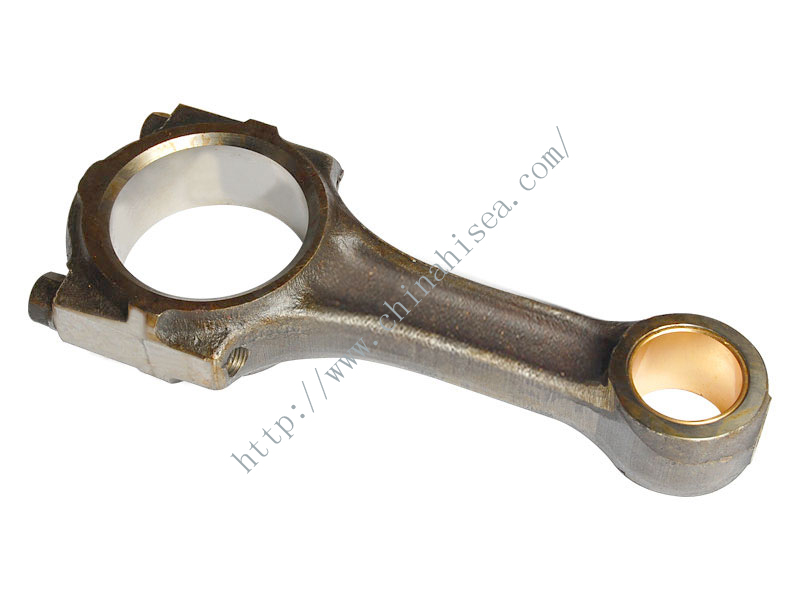

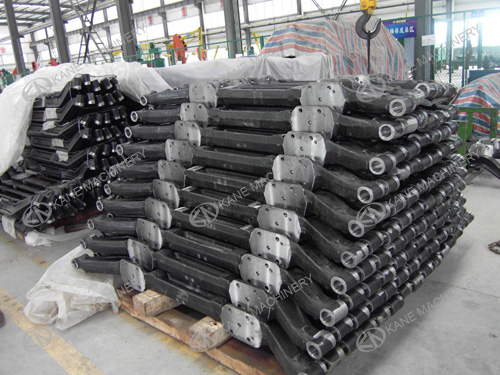

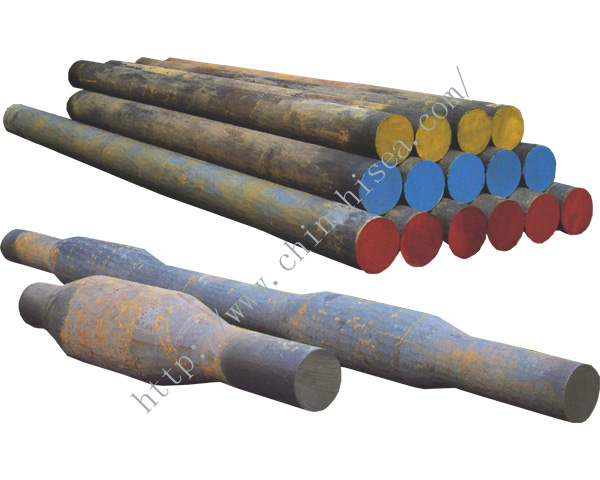


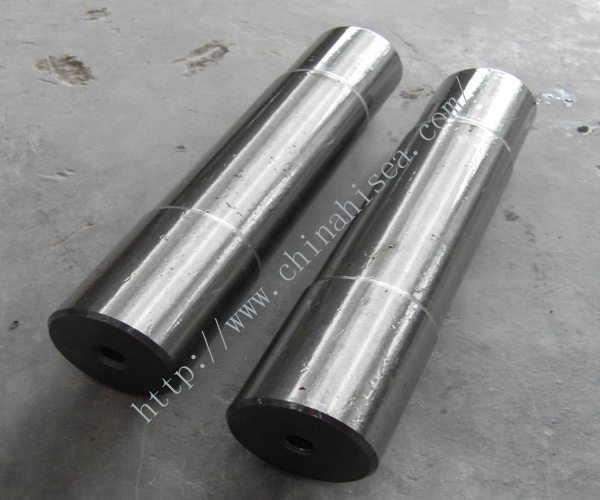
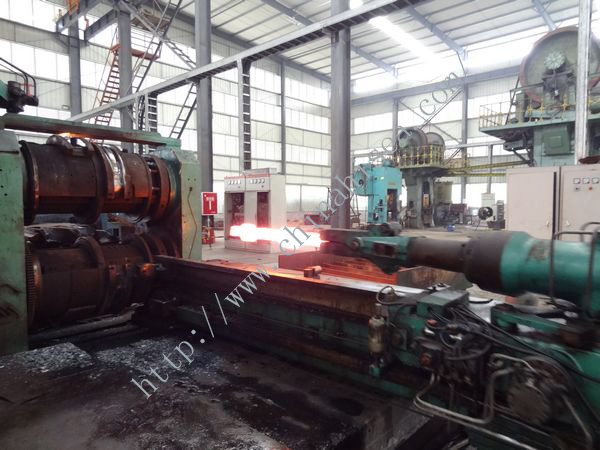
CONTACT WITH US NOW